If a balanced diet, consistent exercise regimen, and healthy lifestyle haven’t made a difference in the appearance of your midsection, there is a solution that can. At DFW Center for Aesthetics and Cosmetic Surgery in Southlake, TX, we offer the tummy tuck, also known as abdominoplasty, a procedure that permanently eliminates excess fat and loose skin in the abdominal area. After the procedure, you can expect a contoured and defined midsection and can enjoy your results long-term.
What Is a Tummy Tuck?
Abdominoplasty is a procedure designed to help patients achieve their ideal midsection by removing excess skin and fat from the area. During the procedure, the surgeon strengthens and repairs weak or separated abdominal muscles to improve abdominal contours and muscle tone. This procedure can correct a protruding midsection, loose or sagging skin, and excess fat.
Many factors can negatively impact the appearance of the midsection. These factors are often beyond your control and make it difficult, if not impossible, to achieve your ideal midsection even with the healthiest diet and a regular exercise routine. The aging process, prior surgeries, pregnancies, and weight fluctuations can all cause changes to the midsection over time. With a tummy tuck, we can help you achieve your ideal midsection with advanced and customizable surgical techniques.
What Are the Benefits?
Patients who undergo a tummy tuck can expect a completely customized procedure tailored to their exact needs. The procedure can permanently remove excess fat cells from the abdominal area while also removing loose or sagging skin. The results are long-lasting, so long as you take steps to avoid weight gain after your procedure. Some of the other benefits of the procedure include the following:
- Stronger and more defined abdominal muscles
- Reduced fat volume in the abdominal area
- Tighter skin
- A flat, toned, and firm midsection
- Improved abdominal contours, strength, and muscle definition
- Significant reduction in excess, loose, or sagging skin
- Long-lasting results
The Different Types of Abdominoplasty
There are different types of abdominoplasty procedures that patients can schedule based on their needs and cosmetic goals. We can discuss all of these options in further detail at your pre-surgical consultation to determine which is right for your needs.
The Classic
The Classic is also known as the full tummy tuck and is a traditional abdominoplasty in which we address both the upper and lower abdominal area. Our surgeon will make a horizontal or U-shaped incision above the pubic mound, followed by a second incision around the navel for those who have excess skin around the belly button to eliminate it and then tighten the area.
The Circumferential
Also known as the around-the-world tummy tuck, the Circumferential procedure targets excess sagging skin around the midsection. Our surgeon will create a longer incision than that used in the Classic procedure to eliminate any hanging skin from the upper and lower abdominal area and the flanks. He will also tighten the abdominal wall during this version of abdominoplasty.
The Mini
The Mini tummy tuck only uses a single incision to address loose skin, a protruding lower abdominal area, and stretch marks below the belly button. This surgery is shorter than the other versions of this procedure, and the recovery is quicker.
What To Expect From Your Procedure
The first step in this procedure is your consultation. You’ll meet with one of our board-certified and fellowship-trained cosmetic surgeons, who will discuss your desired surgical outcome and expectations. He’ll also review your medical history, any current medical conditions or prescription, drugs, dietary supplements, alcohol, tobacco, or recreational drugs you’re currently using.
Your doctor will ask you about any allergies you have and discuss the use of anesthesia during the procedure. After your in-depth consultation, he’ll give you his professional recommendation based on your unique needs. Photos will be taken of your midsection at this time so that we can help you better visualize how the procedure will transform your body and drastically improve your abdomen, body contours, and overall appearance.
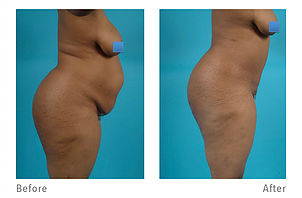
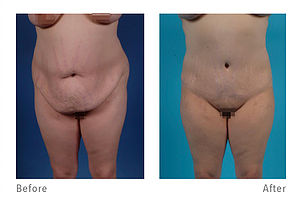
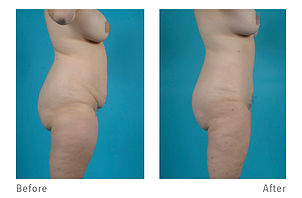
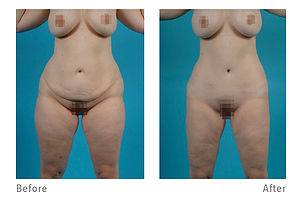
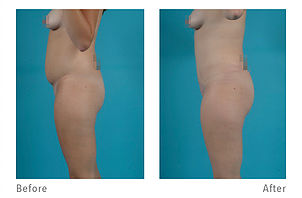



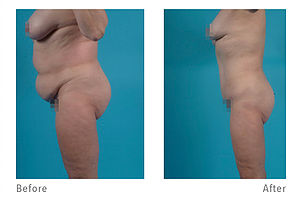
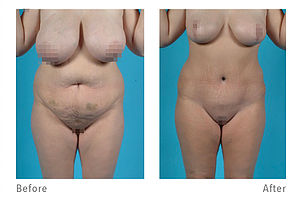

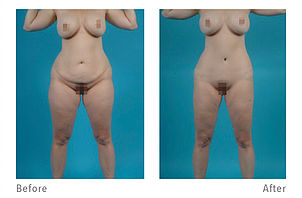
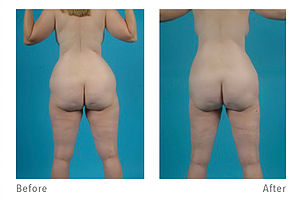
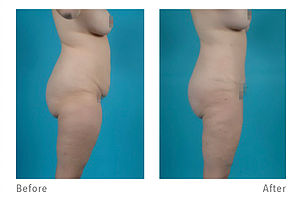

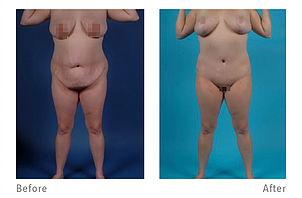
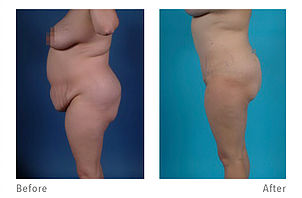
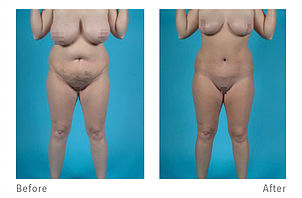
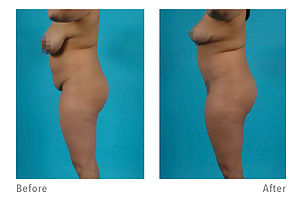
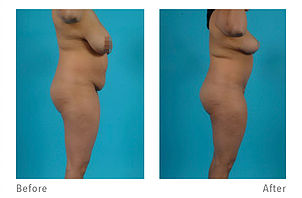
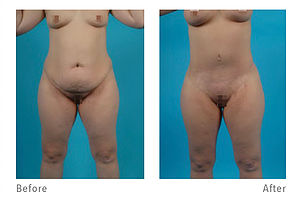
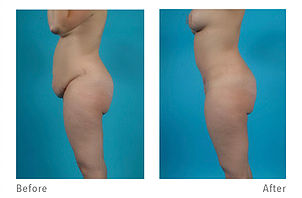
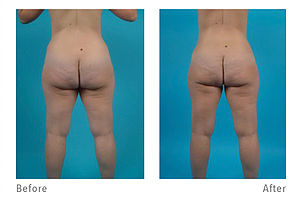
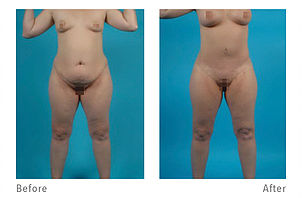
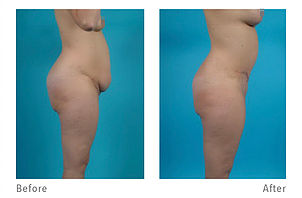
Your Procedure
Your procedure will take place at either our Colleyville office or our surgery center in Plano. You’ll need to take some steps to prepare for the procedure, including refraining from the use of certain medications and avoiding smoking for at least one month before your procedure. A tummy tuck can take several hours, especially if the surgeon needs to use liposuction and muscle-tightening techniques to help you achieve your desired surgical outcome.
Step One
Before the procedure, you’ll receive local, intravenous, or general anesthesia based on your surgical treatment plan.
Step Two
To begin the procedure, your doctor will make a horizontal incision along the pubic bone mound, remove excess skin and fat, and repair the abdominal muscles as needed.
Step Three
Your surgeon will make a second incision around the belly button, if necessary, to remove excess skin from the upper abdominal area and then create a new opening for the belly button.
Step Four
The doctor will then close the incisions with clips, sutures, or skin adhesives. In some cases, surgical drains may be used, but they are often unnecessary.
Your Recovery
Each patient will have a unique recovery process based on their surgical treatment plan. Your doctor may recommend that you stay overnight at the hospital, or you’ll be able to return home the same day of your procedure, based on the extensiveness of your procedure.
Immediately following your procedure, you’ll stay under observation for a few hours. We’ll provide any necessary recovery and post-op information, including how to clean the area if the surgical drain is needed to eliminate excess blood in the fluid.
What To Expect
You can expect to resume driving, cooking, and other normal daily activities within the first two weeks. Most patients return to work within two to four weeks of the procedure. Patients who undergo a mini tummy can return to work within four days. If you work a strenuous job, you’ll need to plan on taking four weeks off to promote full healing. You’ll also need to avoid lifting anything over 25 pounds to avoid disrupting the incisions and extending your recovery.
Who Is a Good Candidate?
The best candidates for abdominoplasty are patients in good health who have reached a stable weight and have realistic expectations about the procedure and the outcome. The best candidates should also be non-smokers who want to eliminate excess skin, stubborn fat, and stretch marks or correct the separation of the abdominal muscles and other cosmetic imperfections in the abdominal area.
Patients should be done having children before the procedure and have reached their goal weight, as significant fluctuations in weight or an additional pregnancy after the procedure can negatively affect the results.
Achieve a Flat, Defined, and Toned Midsection
Abdominoplasty can transform your midsection in a way that even the healthiest diet and most rigorous exercise routine cannot. If you want to learn more about the tummy tuck, what to expect, and find out whether it’s right for you, we can schedule an initial consultation to give you more details and help you get one step closer to a toned, flat, and defined midsection.




